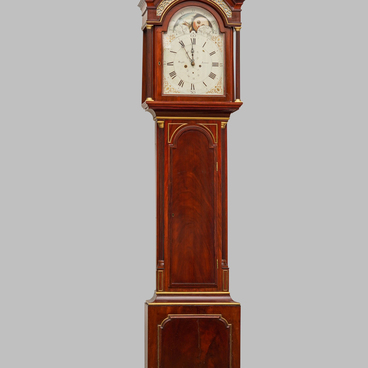The Russian painter Alexey Solodkov (1880-1953) was born near Zvenigorod. He studied at the Stroganov Art School in the 1910s, as well as at the School of Painting, Sculpture and Architecture in Moscow, traveled around the country and painted churches. In the 1920s he became a member of the Association of Artists of Revolutionary Russia, which largely determined the artistic approach he took — socialist realism, revolutionary and historical themes. The artist participated in the First World War. Demobilized in 1918, he arrived in Kolomna in search of work and lived there for the rest of his life. He was one of the first artists in Kolomna to paint historical subjects.
Alexey Solodkov’s work “Kolomna in the 16th century” adorns the exhibition of the Local History Museum. The painting depicts the brick and stone Kremlin in Kolomna, a white-stone cathedral, a row of wooden houses and carved wooden palaces. Life of the townspeople went on at a measured pace under the protection of the high Kremlin walls. For a long time the Kolomna Kremlin was an impregnable fortress and could provide protection not only for the citizens of the town — it was one of the key fortresses of the Russian state. The Kremlin was built by Italian artisans over a period of six years. Sixteen towers and the Secret Tower were erected along the perimeter of the Kremlin, and all the best achievements of West European fortification architecture of the time were used in its construction. The area of 24 hectares was surrounded by a two-kilometer wall, more than three meters thick and over 20 meters high.
The Kolomna Kremlin was a first-class fortification, one of the most interesting buildings of its era. Kolomna served as a military center for a long time: it was here that Ivan the Terrible’s army gathered in 1552 before the campaign against Kazan. Moscow streltsy (riflemen) guarded the Kremlin, performed guard duties and took part in military operations. Town streltsy were responsible for garrison and border guard services, fulfilled the orders of the local administration. Streltsy units were subordinated to the Streltsy Prikaz, and during the war they were subordinated to the military commanders. Town streltsy were also under the jurisdiction of local voivodes (military governors). Streltsy had standard uniforms, training and armaments (arquebuses, muskets, berdiches, sabres and, occasionally, spears). The image of one of the so-called mounted streltsy can be seen in the foreground of the painting by Alexey Solodkov.
Alexey Solodkov’s work “Kolomna in the 16th century” adorns the exhibition of the Local History Museum. The painting depicts the brick and stone Kremlin in Kolomna, a white-stone cathedral, a row of wooden houses and carved wooden palaces. Life of the townspeople went on at a measured pace under the protection of the high Kremlin walls. For a long time the Kolomna Kremlin was an impregnable fortress and could provide protection not only for the citizens of the town — it was one of the key fortresses of the Russian state. The Kremlin was built by Italian artisans over a period of six years. Sixteen towers and the Secret Tower were erected along the perimeter of the Kremlin, and all the best achievements of West European fortification architecture of the time were used in its construction. The area of 24 hectares was surrounded by a two-kilometer wall, more than three meters thick and over 20 meters high.
The Kolomna Kremlin was a first-class fortification, one of the most interesting buildings of its era. Kolomna served as a military center for a long time: it was here that Ivan the Terrible’s army gathered in 1552 before the campaign against Kazan. Moscow streltsy (riflemen) guarded the Kremlin, performed guard duties and took part in military operations. Town streltsy were responsible for garrison and border guard services, fulfilled the orders of the local administration. Streltsy units were subordinated to the Streltsy Prikaz, and during the war they were subordinated to the military commanders. Town streltsy were also under the jurisdiction of local voivodes (military governors). Streltsy had standard uniforms, training and armaments (arquebuses, muskets, berdiches, sabres and, occasionally, spears). The image of one of the so-called mounted streltsy can be seen in the foreground of the painting by Alexey Solodkov.




